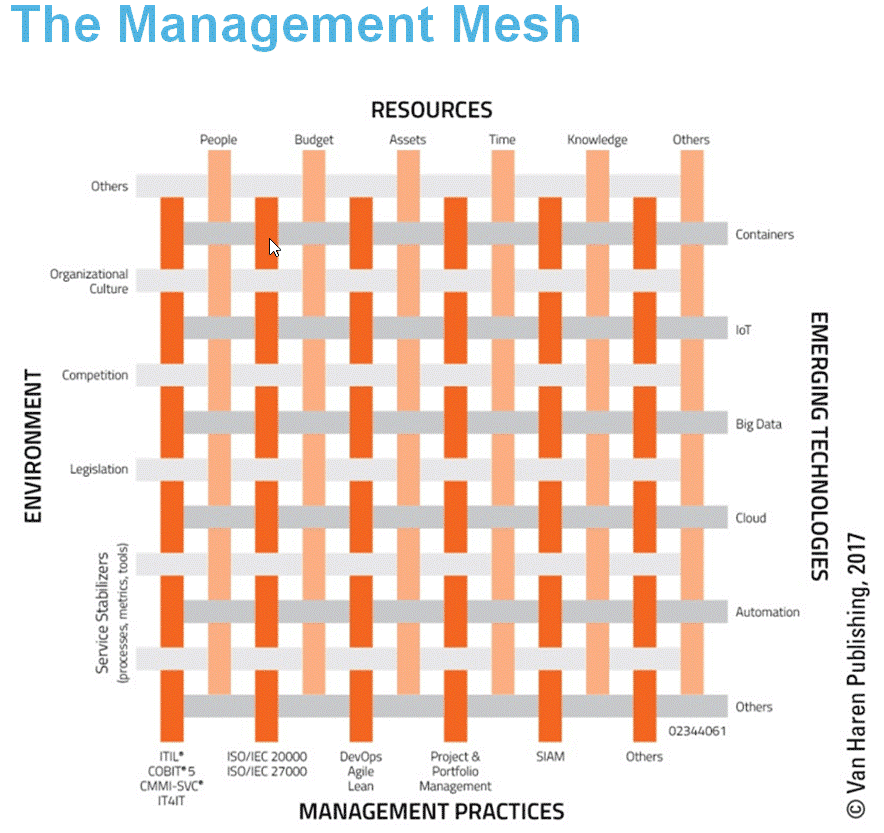ITSM trends: What is VeriSM?

Trends come and go in service management, technology, processes and frameworks. For every trend, the question is: how will it help you? Does the latest trend really help you improve your services?
Today, service management expert Gunnar Oldenhof explains VeriSM: what is it, and is it here to stay?
What is VeriSM?
VeriSM is an approach to service management that helps you choose which frameworks and methods work best for your organization.
Why does VeriSM exist?
VeriSM was introduced in 2017 by the IFDC: the International Foundation for Digital Competences. It’s meant to be the answer to the quick pace of changes in the digital landscape.
Your customers’ wishes are changing and existing tools and frameworks are becoming obsolete faster than ever – even ITIL finally has an update out since February. Plus, new technologies and frameworks are being introduced all the time, from A.I. and automation to cloud software and DevOps.
How do you make sure you stay up-to-date? How do you know your organization is still working with the most relevant tools, frameworks and best practices?
The creators of the VeriSM model want to provide insight into the IT landscape as a whole. And they want to help IT organizations select the right tools, frameworks and best practices.
What does VeriSM stand for?
VeriSM stands for Value-driven, Evolving, Responsive, Integrated Service Management. It’s not another new framework, but rather a new way to approach existing frameworks. So VeriSM isn’t a competitor for ITIL and DevOps, for instance.
VeriSM is based on two important principles:
- Every company is a service provider. Organizing or improving your services is a joint effort for the entire organization. Your IT or Facilities department shouldn’t do it on their own.
- Be flexible. Don’t force all teams to work with the same tools or frameworks. Let your teams do what works best for them.
VeriSM’s most important innovation is its idea that you should form guiding principles for your services.
How do you apply VeriSM?
VeriSM does not (yet) offer a step-by-step guide for implementation. They emphasize that every organization has different needs, so a standard implementation may never come. VeriSM does provide a few guiding principles for applying their philosophy:
1. Your customers’ wishes are your starting point. Don’t base your services on what your colleagues want, base them on your customers’ wishes.
2. Formulate principles for your services. Based on your customers wishes, have delegates from different parts of the organization come up with guiding principles for your services. These principles may apply to quality, security or speed of your service delivery. For example, quick delivery may be more important for your organization than providing a perfect product. If you do it right, your guiding principles will match company goals.
3. Create your own Management Mesh. For each team, pick the best resources, management practices and emerging technologies to help you provide your service the right way. The combination will be different for different teams, and your needs will change along with your circumstances.

What does VeriSM add to theories that are already out there?
Most of the ideas presented in VeriSM expand further on existing best practices. The idea that you should work together with other departments to create the best services, is an expansion of the concept of Enterprise Service Management, also known as Shared Service Management. The ideas behind a customer focused approach and IT governance also aren’t new, and the VeriSM model for designing your services (Define, Produce, Provide, Respond) is similar to ‘Plan Do Act Check’, from the Deming circle.
VeriSM’s most important innovation is its idea that you should form guiding principles for your services. It’s a little bit similar to the 4 values of agile, but the main difference is that VeriSM doesn’t limit you when it comes to deciding which principles to adhere to. That decision is left to each organization individually. And the principles you choose provide support for the services you develop.
Does VeriSM have a future?
It’s difficult to say at this point whether VeriSM has a future. Guiding principles for your services are an interesting concept, and the pragmatic approach – use the resources that work for you – is also sensible. Especially before ITIL 4, this was a refreshing, more agile way of adopting best practices.
At the start, VeriSM’s biggest problem was that there are no examples from the real world yet. It was just a theory, there was no evidence that it actually works. Claire Agutter, Chief Architect of VeriSM, also recognized this problem. She’s encouraging companies to put VeriSM into practice and gather as much feedback as possible. There are VeriSM courses and certificates available, but Claire Agutter says you don’t need any of those to start working with the concept.
How does VeriSM fit into your service management approach?
Whether VeriSM becomes a long-term staple in the service management world or not, its focus on flexibility, collaboration, and customer-centricity offers valuable food for thought. It encourages organizations to step back, reassess their guiding principles, and build a service delivery approach that truly fits their unique context.
At TOPdesk, we recognize that there’s no one-size-fits-all solution to IT service management software. Just like VeriSM, we believe in giving teams the freedom to choose the tools and practices that work best for them—while still working together towards a shared goal: delivering better services for your customers. Whether you're just getting started or looking to evolve your service delivery, we’re here to help you build the right foundation.
Inspire others, share this blog



